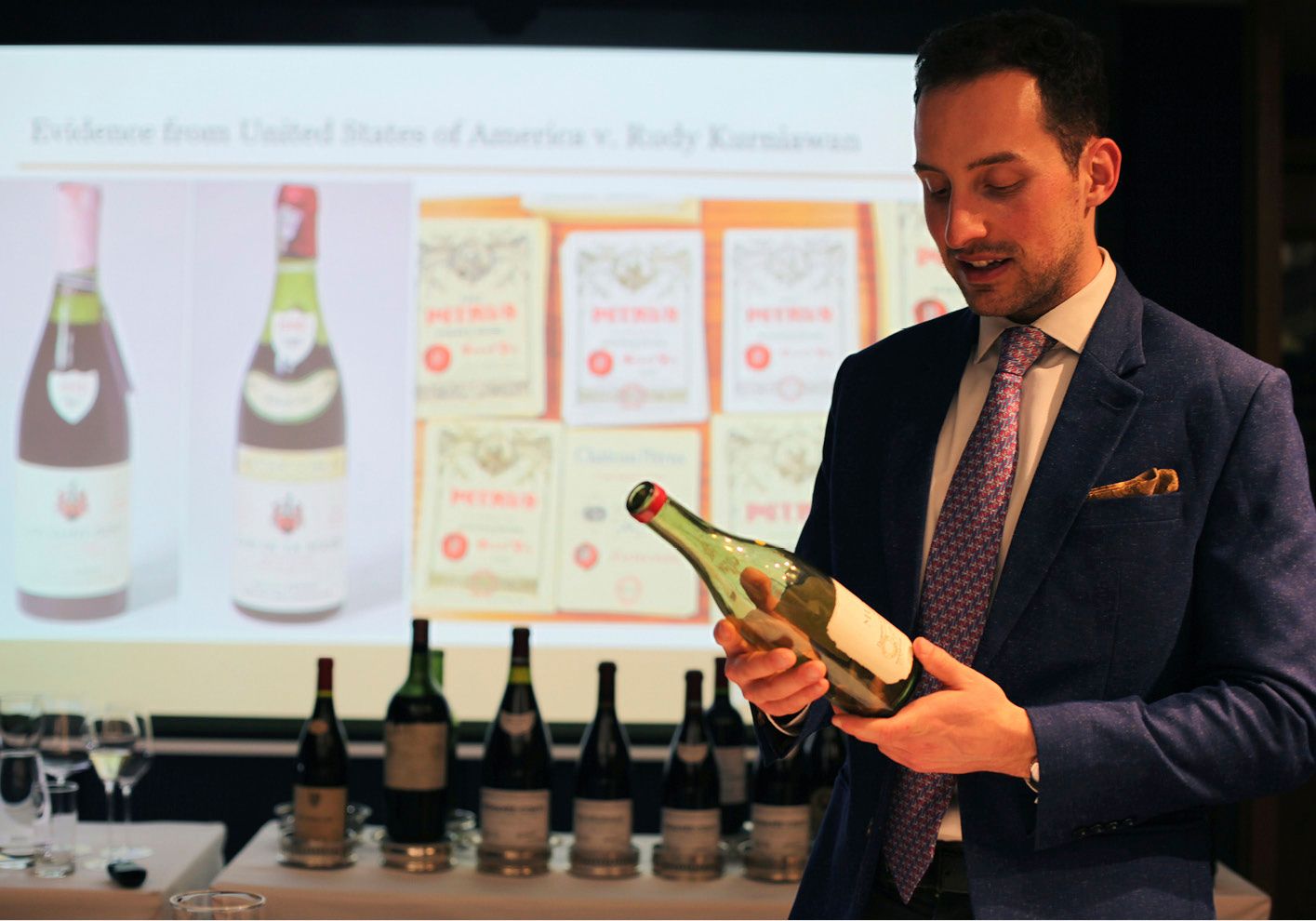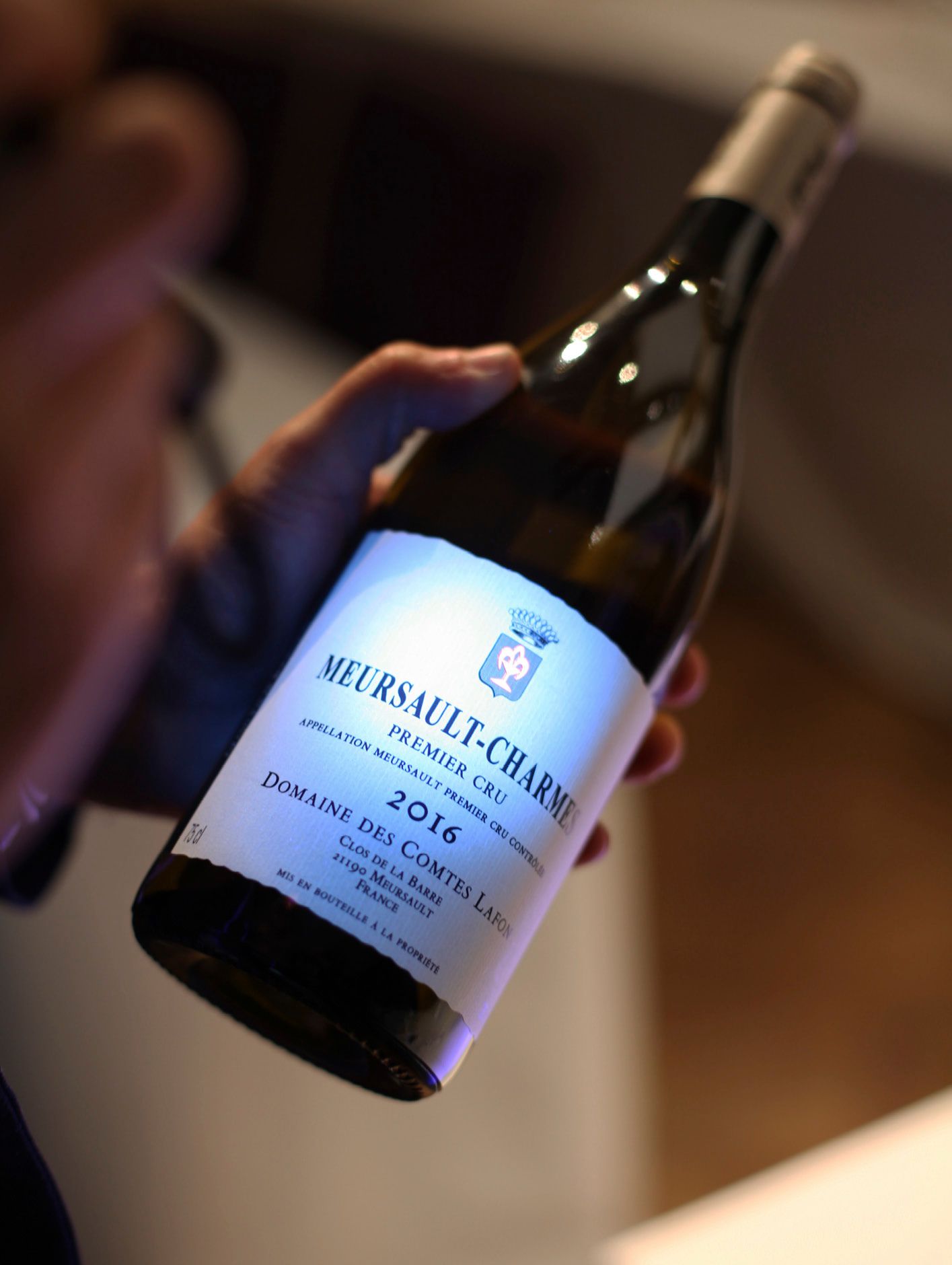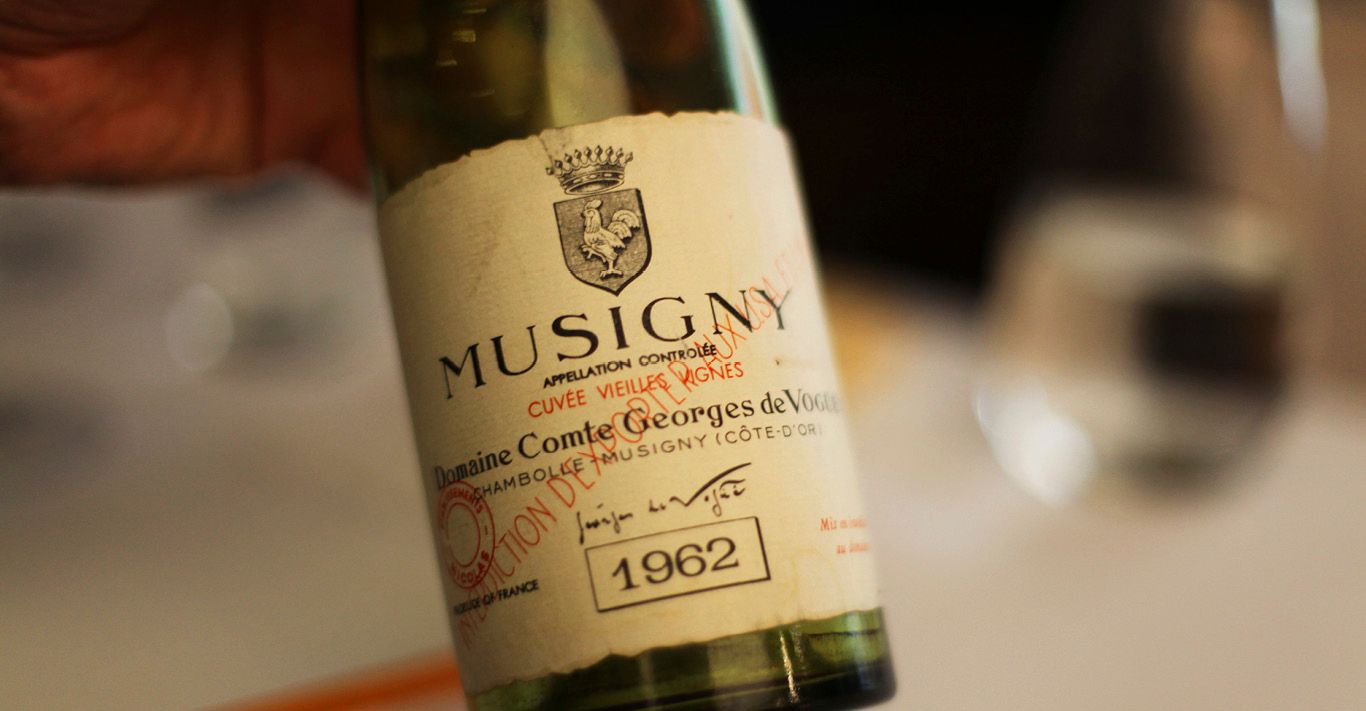WORDS
Chris Madigan
Anyone who has seen the documentary Sour Grapes, which ends with the information that the notorious wine fraudster, Rudi Kurniawan, had been jailed for 10 years in the US, might be forgiven for thinking that the selling of fake high-end wines was a blip we’ve got over – like adult onesies. However, that documentary was made in 2013 and Kurniawan was released in 2020, deported to Indonesia and (according to Jancis Robinson) had been getting involved in the wine trade in Singapore by the end of 2022.
The opening chapter of Eastern Promise, the latest wine-and-crime novel by former Tesco wine buyer Peter Stafford-Bow, has the hero uncovering a fraudulent tasting in London (at first suavely, like a Poirot dénouement, before events descend into mayhem involving a lost shoe and a magnum of fake Château Pétrus, used as a weapon). The rollicking adventure continues to Hong Kong, on the trail of a grander scheme. And it’s not implausible. The World Trade Organisation has estimated that 20% of wine sold is fake, amounting to almost £68 billion a year.
At a recent talk at private members’ wine club 67 Pall Mall, Sebastian Balcombe, from neighbours Berry Bros. & Rudd, talked about his role as quality & authentication specialist, and how best to protect yourself from liquid fraud.

How big a problem is fake wine?
At Berry Bros. & Rudd, we think that those 2020 WTO numbers are probably overstated, at least in terms of the fine-wine market. The fraud is weighted more towards the cheaper and lower-mid-range bottles with familiar brand names – the sort you pick up in a corner shop, which bought it from a wholesaler, who bought it from who knows where…
Hang on, there are fake wines for under a tenner? Given that most of the cost of that is bottling and printing the label, even if they dodge excise duty, how are they making a profit? Is it even wine inside?
Well, unlike the rare-vintage fakes, that sort of counterfeiting is done in high volume… if the true value of the wine in an £8 bottle is around £2, and they replace it with wine worth £1, and they ship containers full of cases, that will turn a profit. And then when they apply the same model to something like Sassicaia – not a cheap wine, but one that won’t raise flags when moved in pallets, that’s medium volume, high margin.
But your focus is mainly on the highest end of Bordeaux, Burgundy et al… what is the level of issue for the more collectible stuff? Are you saying there’s less of a problem?
I would say that it’s lower than 20% at that end of the market. However, there is huge demand… In the last five years, the Liv-Ex Fine Wine 1000 index has increased by 50%. Over the same period, the Bordeaux 150 and Burgundy 150 have gone up by 120%. Covid introduced lots more people to buying fine wine and laying it down, so there are more people investing than ever, many of them less experienced, and there’s more money on the table. Those are the conditions in which fraud is committed.
What does your department at Berry Bros. & Rudd do to protect us?
My boss, Philip Moulin, who began doing this 25 years ago, or one of our team, will check every bottle of wine that passes through Berry’s. If it’s from the winemaker or official agent, it’s mainly to check if it’s the vintage we paid for, or if any bottles have smashed. But any customer can send a bottle or case they’ve bought at auction, or from another merchant; we’ll store it in bond and offer it as a broker if you want. That is where we need to be alert for risk, because we guarantee the authenticity of everything we sell. So, first we’re looking for a paper trail; provenance. And then we’re on heightened alert if wines are from merchants in certain countries, or are notoriously faked wines.
Are there obvious things the casual collector can do to spot fakes?
It comes down to knowledge, which of course means that if you’re not certain you have all the expertise, you are best buying from someone reliable like Berry Bros. & Rudd. For example, there are certain wines that one should be suspicious of: right-bank Bordeaux only became popular in the latter half of the 20th century, so it’s rare for a pre-1950 Pomerol to have been kept all that time. But there are more obvious clues – just look at some of the things Kurniawan did… the big moment when he tried to sell wines that couldn’t exist because Ponsot hadn’t made a Clos St Denis until years later… you can research that. Over the years, there have been ridiculous fakes with terrible spelling mistakes, like ‘Benfolds Grange’, but there are other, less obvious mistakes if you check against a photo of the genuine label. Condition is a factor. Rudi had bottles with a knackered capsule but a pristine label – that should set off alarm bells. Sometimes you’re told a château reconditioned the bottle, but for a start there would be paperwork to back that up, and secondly, I know of no château that would replace a label but leave the capsule in a terrible state. Some fakers will try to age the label, but they’re always looking for a quick turnaround, so you can literally smell tea or coffee on it!

So, is authentication quite an analogue, manual profession then?
A certain element of it is very hands-on. Maureen Downey, the expert who helped the FBI bring down Kurniawan and subsequently trained us at Berry Bros. & Rudd, said in the Sour Grapes documentary that when she lifted a bottle of Pétrus, she ‘almost threw it on the ceiling because it was so light’, and realised something was wrong. Some of the tools we use are very simple – a jeweller’s loupe will most likely reveal if a 1960s label been printed with a 1990s laser printer… But, in recent years, some producers have used more advanced printing techniques to ensure authenticity. There are invisible inks we can look for with a UV pen. And there are other things to check with a digital microscope. For example, we examined a bottle of Château Le Pin 2009. To the naked eye, a real bottle appears to have a red border, but it’s actually a repeating list of the owner’s children’s names. At 300x magnification, we were able to see that. And there are winemakers using Prooftag – a tamper-proof seal with a polymer panel that has a unique pattern of bubbles in it, and a QR code that allows you to check that pattern against the database.
Are wines as NFTs and Blockchain the way forward for authentication?
I’m not an expert on the technology behind Blockchain, but, from what I know, it’s fine; it’s secure as a means of confirming that a wine went from owner A to broker B to customer C. One issue we have, though, is that you must agree to have your data entered into the blockchain, and a lot of people who collect wine are very private about their lives. So, there’s a lot of potential, but there’s a long way to go.
What happens when you realise wines you’ve been sent are not genuine? Do you destroy them?
No; we don’t have the remit or right to do that. We don’t own the wine and we are not the winemaker who has been counterfeited. We send it back to the owner and explain why we are not prepared to accept the risk. But we cannot stop the owner trying to sell it through another broker or auction house. We work very closely with major auctioneers such as Christie’s and Sotheby’s, and they’re very good at doing their checks these days.
If fakery is so abundant, and no one takes responsibility for destroying fakes, it does suggest that investing in wine might not be such a good idea…
The last thing I want to do is scare you into thinking every wine you buy might be a fake, but the issue is there. And I think the more people are aware of it, the better. And – of course I would say this – but the best way to reduce risk is to buy from a trustworthy merchant or broker such as Berry Bros & Rudd. Not only does Berry’s buy directly from the winemaker or its UK agent, but our authentication team is an extra layer of protection. And if you want to pay for an expensive wine in a restaurant or club, make it one (like 67 Pall Mall) that sources its wines through reputable merchants. There is nothing wrong with the secondary market in wine per se, but it does increase the risk.
Federico Moccia, head sommelier at 67 Pall Mall joins the conversation, so I ask him what steps a venue like his takes to keep everything in its cellars authentic…
At 67 Pall Mall we are always educating ourselves, both the membership and the staff. We host many lectures and masterclass events like this – and they’re open to both members and their guests, and the 67 Pall Mall sommelier team. We do also have access to specialists in the field such as Sebastian, so we’re always putting that professional advice into practice at the Club.





